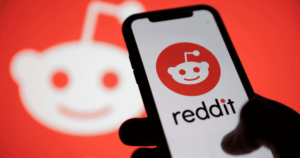Engage Connect and Stay Informed in Real-Time with Twitter
Launched in 2006 by Jack Dorsey, Biz Stone, and Evan Williams, Twitter has become a social media giant known for its unique microblogging format. With over 330 million monthly active users, Twitter has evolved into a platform that facilitates real-time conversations, news dissemination, and global interaction. This article delves into the evolution, distinctive features, cultural impact, and challenges of Twitter, a platform that has transformed the way we communicate and share information.
The idea behind Twitter originated from the desire to create a platform that allowed users to share short, concise updates with a global audience. In March 2006, the founders introduced the platform as a way for users to answer the question, “What are you doing?” in 140 characters or less. This brevity became a defining characteristic of Twitter and led to the coining of the term “tweets.
Twitter’s microblogging format, limiting posts to 140 characters, encouraged users to distill their thoughts into concise and impactful messages. However, in 2017, Twitter doubled its character limit to 280, allowing users more space to express themselves. This change aimed to enhance the user experience, enabling more meaningful and comprehensive communication while preserving the platform’s characteristic brevity.
Twitter’s real-time nature distinguishes it from other social media platforms. Users engage in conversations, share updates, and participate in discussions as events unfold. The introduction of hashtags (#) played a pivotal role in organizing and categorizing content. Hashtags enable users to join or initiate conversations on specific topics, making Twitter a powerful tool for following live events, trends, and breaking news.
Two essential features that contribute to Twitter’s interactivity are retweets and likes. Retweeting allows users to share another user’s tweet with their followers, amplifying the reach of a message. Likes, represented by a heart icon, signify approval or acknowledgment of a tweet. Both features foster engagement and help content gain visibility within the Twitter community.
Twitter Moments, launched in 2015, curates and organizes tweets around specific topics, events, or stories. It provides users with a snapshot of the most relevant and engaging tweets related to a particular subject. Moments serve as a powerful storytelling tool, enabling users to catch up on events or trends they might have missed.
Twitter has become a primary source for breaking news and real-time updates. Journalists, news organizations, and eyewitnesses often use Twitter to share information as events unfold. The platform’s ability to disseminate information rapidly has contributed to its role as a critical tool in crisis reporting, citizen journalism, and global communication.
Twitter’s influence extends beyond news and entertainment to political discourse and social movements. Political leaders, activists, and organizations leverage the platform to communicate directly with the public, share their perspectives, and mobilize support. Twitter has played a significant role in amplifying voices and facilitating conversations around social justice movements, political campaigns, and global issues.
Twitter serves as a powerful marketing tool for brands and businesses.
Twitter serves as a powerful marketing tool for brands and businesses. Companies use the platform to share updates, engage with customers, and participate in conversations. Influencers, individuals with significant Twitter followings, collaborate with brands to promote products or campaigns. Twitter’s open and conversational nature makes it an effective platform for building brand awareness and fostering customer engagement.
Twitter has faced challenges related to content moderation, online harassment, and the spread of misinformation. The platform has implemented measures to address these issues, including updates to its policies, improvements in reporting mechanisms, and increased efforts to combat bots and fake accounts.
The character limit, while distinctive, has also been a point of contention. Some users appreciate the brevity it enforces, while others feel constrained in expressing complex thoughts. Twitter’s challenge is to balance the need for succinct communication with the evolving expectations of its diverse user base.
Monetization has been a focal point for Twitter’s sustainability. The platform generates revenue through advertising, promoted tweets, and partnerships with businesses. Twitter’s ad targeting capabilities, based on user interests and engagement, make it an attractive platform for advertisers looking to reach specific audiences.
Twitter’s evolution from a simple microblogging platform to a global hub for real-time conversations has reshaped the way we communicate, share information, and engage with the world. As Twitter continues to adapt to user needs, address challenges, and shape cultural conversations, its impact on global communication and online interaction remains profound. The platform’s ability to foster real-time discussions, amplify diverse voices, and serve as a catalyst for change highlights its enduring relevance in the ever-evolving landscape of social media.



